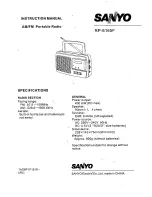
POWER
ON
OFF
TIMERS
ON
OFF
AC
DC
CYCLE
CAUTION
A
B
C D
E
F
1.4
1.6
1.8
2
2.2
2.4
2
4
6
.9
1.1
1.4 1.6
1.8
2
2.2
2.4
2
4
6
.9
1.1
19 21
20
30
33
35
2
15
11
3
7
2
3
7
11
15
19 21
20
30
33
35
FU
SE
FUSE F
US
E
FIG. 7
FIG. 6
FIG. 4
FIG. 5
FIG. 3
FIG. 2
FIG. 1
FIG. 12
FIG. 11
FIG. 10
FIG. 9
FIG. 8
ILLUSTRATION 3-A
set, the operator need not make any further adjustments, unless an alloy change takes
place. Set the dial marked “OFF” to determine the amount of time the head is up or
“off” the substrate. The higher the number, the longer the head is up.
G)
Current Cycle Time: The current pulse is controlled by the two dials called
“MARKING CURRENT CYCLE TIME” (FIG. 7). The dials operate in the same
manner as the accessory cycle dials. They are turned clockwise. The dial marked
“ON” controls the length of time the current is delivered to the marking head. The dial
marked “OFF” controls the length of time the current flow is interrupted, even through
the marking head remains in contact with the substrate. The greater the number, the
longer the times in both cases. An amp meter (FIG. 8) has been provided for visual
confirmation of the current.
These timers are used for applications that require a long marking time. A long
marking period builds up heat that breaks down the stencil. These timers pulse the
current to the marking head. This prolongs the stencil life and reduces the total marking
time needed.
These timers are also helpful in marking contour parts. The “OFF” timer is first to
time out. This allows time for the marking head to descend and seat the stencil on the
part before the current is applied. This improves the quality of marks on the contoured
surfaces.
H)
To activate a single machine marking cycle, depress the footswitch.

























